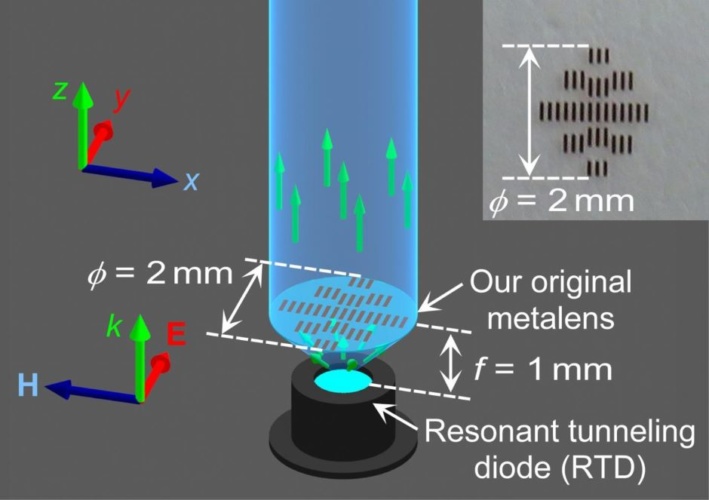
This is the claim of researchers in Japan, whose metalens converts approximately spherical-shaped terahertz waves to aligned terahertz waves. The team’s findings have been published in Applied Physics Express.
The researchers previously developed a low-reflection metasurface - an ultra-thin interface that can manipulate electromagnetic waves - specifically to control terahertz waves. These waves overlap millimetre waves and infrared waves, and, while they can transmit a significant amount of data, they easily attenuate in the atmosphere.
MORE FROM ELECTRONICS & COMMUNICATIONS
The technology may not be suitable for long-range wireless communications, but could improve short-range data exchanges, such as residential internet speeds, said paper author Takehito Suzuki, associate professor in the Institute of Engineering at Tokyo University of Agriculture and Technology.
According to Suzuki, the researchers have taken a step toward such application developments by using their metasurface to craft the world's "top" ultra-short metalens that collimates to align an optical system with a distance of 1mm. The metalens is said to be capable of increasing transmitted power by three at the far field, where the signal strength typically weakens.
"Terahertz flat optics based on our originally developed low-reflection metasurface with a high-refractive index can offer attractive two-dimensional optical components for the manipulation of terahertz waves," Suzuki said in a statement.
The challenge was whether the collimating lens could be mounted closely to a resonant tunnelling diode that transmits terahertz waves at the right frequency and in the right direction. The minimal distance between the diode and the metalens is the necessary ingredient in current and future electronic devices, Suzuki said.

"We resolved this problem," Suzuki said. "We integrated a fabricated collimating metalens made with our original metasurface with a resonant tunnelling diode at a distance of one millimetre."
Measurements verify that the collimating metalens integrated with the resonant tunnelling diode enhances the directivity to three times that of a single resonant tunnelling diode.
The researchers tuned their device to 0.3THz, a band at a higher frequency than 5G wireless communications. The manipulation of higher-frequency electromagnetic waves allows the upload and download of huge amounts of data in 6G wireless communications, according to Suzuki.
"The 0.3THz band is a promising candidate for 6G offering advanced cyber-physical systems," Suzuki said. "And our presented collimating metalens can be simply integrated with various terahertz continuous-wave sources to accelerate the growth of emerging terahertz industry such as 6G wireless communications."










Emergency law passed to protect UK steelmaking
<b>(:-))</b> Gareth Stace as director general of trade body UK Steel, is obviously an expert on blast furnace technology & operation. Gareth...